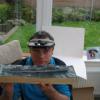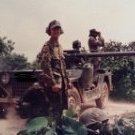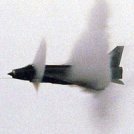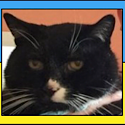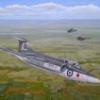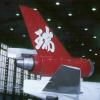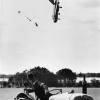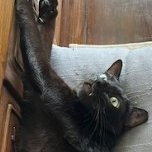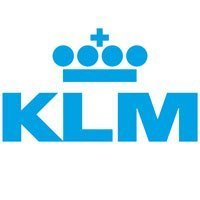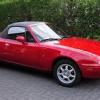Search the Community
Showing results for tags '1/144'.
-
Been busy with Dads DIY for my daughters new home the last couple of month so not much time for modelling but we got rid of her yesterday she finally moved in yesterday. So should have more time now to relax and build again I built the 1/350 scale version of this back in May and then got the bigger version a couple of weeks ago at Scale Scotland show Started it at the club on Thursday night and got this far great kits and good value hopefully gives me some inspiration to get back to building again I had gone to the dark side with a Sherman build on the kitchen table. Stay Safe beefy
- 24 replies
-
- 11
-

-
PLAN Wuhan project 33G, 1/144 bit of a beast, the flood holes just had to be opened out, or did they LOL. Still going, one hull half done, half the other, mid casing started on one side other to do. Opened and glazed with kristal clear wheelhouse in the sail. Missile tubes done, building OOB with the exception of flood holes etc. All the best Chris
-
I know…..I have too many work in progress on hand but still, I am starting one more. Bought this old Airfix kit for a low price so that I can build the Singapore Airlines Concorde. SIA was the only other Airline besides BA and Air France to fly the Concorde (with the SIA bird painted on the plane). The 4th airline that flew Concorde was Braniff Airways but it didn’t get to paint the plane to the airline’s colour. Both flew the plane briefly and didn’t last too long. The kit plane came with a broken nose and it sure looks like those model kits that I used to see long ago. The panel lines are raised. I have started to sand them and scribe the recess lines.
-
Hello all Another brail scale completed today....the really nice Saab Draken from Platz in 1/144. Super simple construction made this a breeze of a build. Nothing added apart from a brass wire pitot tube. Paints were Mr Hobby, Xtracrylix and Vallejo. I looked at various photos to try and match the camo colours but every photo seemed to be different, so I used the Scandinavian Historic Flight machine as an example of what the paint colours would have been when factory fresh. Interestingly the blue grey ended up being close to EDSG so I chose that. Hope you like. Comments much appreciated IMG_20230911_190028 by Gray-1969, on Flickr IMG_20230911_190105 by Gray-1969, on Flickr IMG_20230911_190042 by Gray-1969, on Flickr IMG_20230911_190115 by Gray-1969, on Flickr IMG_20230911_190137 by Gray-1969, on Flickr IMG_20230911_185927 by Gray-1969, on Flickr IMG_20230911_185940 by Gray-1969, on Flickr IMG_20230911_190012 by Gray-1969, on Flickr
- 12 replies
-
- 23
-

-

-
The kit. Shelf space is a premium so for bigger subjects I usually go for 1/144. I paid a little bit more than that The kit has no interior and pretty low parts count so goes together pretty quickly. Will need a little sanding and filling. I’ll let the adhesive set overnight first.
-
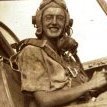
Dive! Dive! Dive! U-Boat Type IIB ***Finished***
Jb65rams posted a topic in Blitzbuild 2023 - Part 2
My entry for this Blitzbuild.- 19 replies
-
- 15
-

-
Being a long time fan of the Hawker Sea Fury, I couldn't resist one of Mark I Models more recent kits. Two Sea Furies in one box! And for me, it had to be Korea where they distinguished themselves on interdiction operations from Royal Australian Navy and Royal Navy carriers. Hawker Sea Fury FB.11 VX764 / 134-K of No.805 NAS flown by Lt Cdr (P) W.P. Bowles (OC 805 NAS), HMAS Sydney, Korea. Autumn 1951 Hawker Sea Fury FB.11, WJ223/106-O No.802 NAS flown by Sub Lt. Brian 'Schmoo' Ellis (who shot down the MiG-15) HMS Ocean, Korea. Summer 1952 A few modelling details; Paint - Xtracolor X5 EDSG, X7 Sky and X814 Deep Bronze Green for the bombs, Humbrol 74 Linen for the Hawker primer yellow. Final coat of Winsor & Newton Artists' Acrylic Matt UV Varnish. Decals - Mark 1 and home produced. Scratched - Canopies and RAN rocket rails. Nice kits, built mostly OOB and not without the odd challenge. Took a bit longer than I'd planned. For those who might want more details of the builds, here's a link to the WIP; Thanks for looking.
-
Boeing KC-135E Stratotanker 314th ARS, Air Force Reserve Command, Mather AFB, California Seen at Mildenhall, May 1989 It was the 'Foxy Lady' nose art that caught my attention during a visit to Mildenhall in May 1989 (probably the arrivals day for Air Fete 89 but can't quite remember!). This KC-135 was sitting in a good position for photography. It wasn't until 2001 that I got around to building the model, and at the time had my own photos as reference. I also had a very informative article from Scale Models magazine on the subject of 707 and derivatives fuselage lengths and wing types, including suggested methods of shortening the old Revell 707 kit. Time has moved on and as I brought the model down from it's attic resting place I was unable to locate neither my photos nor the article, which I had intended to scan and post here. However, to my surprise a simple Google search on 'Foxy Lady KC-135' came up with a photo of that aircraft on that day, which I have now included here! One day maybe I will find the magazine article and will scan and post it if/when I do. Meanwhile on with the pics. The Foxy Lady nose art was hand painted by the way and I haven't included a close up of it because it becomes too obvious that it was! The real thing on that day in 1989:
-
I built three 1/144 Hawker Hurricanes in other GBs this year, and while they aren't what I'm used to, I did enjoy them. From left to right, these are a Sweet fabric wing Hurricane in Belgian markings; a Zvezda Hurricane in an Egypt-based RAF night fighter scheme (kit was kindly given to me by @Mjwomack); and a Sweet metal wing Hurricane in Australian markings. The Sweet boxes include two kits, so I have a leftover set of metal wing sprues from this kit . . . . . . which I will use with these decals . . . . . . to model an FAA Hurricane for this GB! These are the sprues in the Sweet box: I'll be working with the clear ones, which is a bit different isn't it!?
-
The Boeing XB-47D Stratojet in 1/144th. The Boeing Stratojet is probably one of the nicest looking jets of the early jet age. In 1/72nd scale the Stratojet is very large model, and I have built two or three in the past. So, for a more manageable scale, I decided to use the Academy offering in 1/144th scale( Kit no 4443). The kit has been issued in differing guises over the years from the Hobbycraft variants B-47B, B-47E, and RB-47H issues, to the Academy B-47B variant boxing , and latterly offering by Academy which contains parts and decal options for all three that the separate Hobbycraft boxing's offered. So, for this particular build I wanted to replicate the XB-47D experimental version of which there were two airframes. These were conversions of the B-47B airframes each with two enormous Curtiss-Wright WT49 W-1 Turboprops driving 15ft 'Paddle Type' propellers in place of the twin podded jets under the inner wing. Two airframes were 51-2103 and 51-2046 with the former first flying on 26th August, 1955. Each Wright WT49 Turboprop developed 9710 horsepower and each 15' Curtiss Electric propeller had automatic feathering and also provided some ground reversing propulsion. My start point was an Academy B-47B/E boxing pictured, and the RetroWings XB-47D conversion set (RW44092), also pictured. I would probably need to rob my decal bank to make up the serials. My aim is to create something a little different than the normal B-47's seen on club tables or at shows. Anyway, onto the build......... The parts are crisply moulded and well detailed for this scale. After a little cleaning up the cockpit and undercarriage bays were painted in a Zinc Chromate Green type of colour, my mix is Tamiya Yellow Green XF-4 and Olive Green XF-58 roughly at a ratio of 3:1. Once dry the seats were painted up using various blacks, greys, greens, reds. To create a representation of seat belts I painted some thin paper pale brown, attached with PVA glue and some dots of black and silver to suggest buckles. I plan to add two instrument panels from thin plasticard and to be painted up to suggest instruments as the build enters its final stage. The XB-47D was converted from B-47 airframes so the panels in the fuselage were removed by gently scoring along the indicated lines and the early type RATO panels supplied in the kit installed. Some trimming and shims were needed to get a nice finish. I also found it helpful to add a brace behind the RATO panel to prevent distortion when filling/sanding. This meant that the rear wheel bay needed to have some plastic removed from either side to allow fuselage to fit correctly, luckily the plastic is thick enough to be adjusted without affecting the bay detail. Once done the cockpit was attached, wheel bays inserted into fuselage and once set the halves will be joined ensuring as good as a match as possible to minimise any filling. I will also attach the clear nose part for this version, the XB-47D was based on the B-47E, but the airframe retained the early more glazed nose of the B-47B rather than the solid of the B-47E, also the early internal RATO fitment of the B-47B. The wings were next up, and the outer engine positions cleaned up as there was a small gap at the rear of the fairings. This still needs a little more attention and some rescribing the lost/filled panel lines. Whilst on with the wings, I modified the flap layout and re-scribed the new altered flap using the resin flap inserts in the conversion set as a guide, rather than cutting the flaps out an the inserting the resin supplied flaps as indicated in the set. As for the new engines and pylons, I'm still mulling over the best way to tackle these.
-
Another one from my production line. Revell's 2013 re-release of their vintage 1993 A330 kit. It sat in my stash for the past 10 years before I finally got around building it. Qualitywise,its the same as the A340. Everything fits quite well and detail is nicely done. The highlight of this boxing is clearly the decal sheet,courtesy of NAZCA. There are countless detail markings that cover probably every detail of the original. The most tricky part to do was the masking/painting of the purple parts. The tail has to be painted as for the stripe,the violet part is on the decal. But matching the colors is very difficult,so I decided to paint on all purple parts. Revell gives a helping hand on the instruction sheet,although there are some serious errors in their measurements for the windowstripe. In the end I made a copy of the decal stripe and used it as a template. The purple paint is from Gunze Aqueous H39. It was the closest match I could find. Depending on the pictures on the net,the purple looks different from pic to pic.Some show a very faded out purple,others even a bit metallic. The rest is Gunze white primer for the white parts,Testors aircraft grey mixed with white for the wings and Revell 374 mixed with Revell aluminium 99. On a forum I once read that Revell has the wrong engines for the Thai version. Thai uses RollsRoyce engines on their A330s. I got a set of BRAZ RR engines,that were included on another A330 kit,that I got 2nd hand. Research on the net later showed unfortunately the opposite... Thais earlier batch of A330s from 1994 to 97 had PW engines as depicted in the Revell boxing. As Thai Airways has named all of tjeir aircrafts,I had to "cheat"a bit... The superb Authentic Airliners detail set came to the rescue. There are "open" door decals included. So I used them on both sides.As the doors swing open outside/forward,they hide the name on both sides,which saved me a lot of trouble.😊 Cheers
-
It has been quite a while sice I posted something. I had a busy time,and also the weather here was not the best to make pictures on the balcony. Modelling was very busy though and a lot of airliners got finished since last summer.Some had been pre-started and finally finished,others were built from scratch. So,here are the first of a larger batch of kits that I will post in the comming days. I had the rather crazy idea of building my 8 A330/A340 kits ,I had in my stash for some years,more or less simultaneously. Had I known what a task that would be beforehand,I would not have gotten me into this mega-project.🤪 For my A340s I decided to correct the inner engines as good as possible. Revell's A340 was first released in early 1991 and has a few accuracy issues as it seems based on earlier drawings. The most obvious are the engines.They miss the little fences and the inner engines hang low due to the too high engine mounts. The outer engines look fine though and compared with the real thing,the inner engines should be at the same hight as the outer ones. To correct this as good as possible,I cut off the mounts from the nacelles and shortened them about 1mm.Then I reattached them on the nacelles using liquid plasic and a bit of superglue. The inlet rings on all engines were recreated with pieces of plasticard ,to avoid a seam. The rest of the build was by the book. The kit is very nicely detailed,esp. the landing gear,which makes it a bit fiddly to install though. Paints used are Gunze white primer for the white parts,Revell red 31 ,Testors aircraft grey mixed with white for all the grey areas and Revell grey 374 mixed with a few drops Revell aluminium 99 for the inspar panels. The decals for the Edelweiss livery come from DRAW decal and are of great quality with a very thin carrierfilm.Application requires some attention. I chose HB-JMD because that was the Airbus I flew on in 2018 from Zurich to Ho Chi Minh City on my way to Manila. It was a very comfortable flight with a great service. Edelweiss is the charter subsidiary of Swiss and has 5 A340s in service,all former Swiss aircrafts. The A340 was delivered factory new in December 2003 and changed to Edelweiss in September 2018. I actually wanted to photograph the A340 on my regular "apron" but I must have misplaced it😳 now a piece of runway has to do for the moment... Cheers
-
A build I recently finished as part of a Minicraft RIP Group Build over on KG144. This is the first boxing of this kit that Minicraft released, no less, from 1998. I reckon the second half of the 1990s was the golden age for Minicraft, being when they were producing their own new moulds with the DC-3, DC-4 and Catalina also dating from this period. The kit is quite basic in many respects, but Cobra company came along with a very good resin update set that included props, radar domes and jet engines. I've used one of the Blackbird Models re-issues of this set. I also used the sublime Caracal Decals set for the C-97, which includes decals for this rather unusual HC-97G from the 305th Aerospace Rescue and Recovery Squadron based at Selfridge AFB in Michigan. The 305th operated the HC-97G for seven years from 1965 in first aluminium and latterly overall gray schemes with yellow bands. During this time it undertook Air Sea Rescue missions across the upper and mid-western US but also around the globe in support of both NASA and US military operations, including in Southeast Asia. You may well wonder what use a lumbering great transport like this could possibly have in an air rescue mission, where at least some emergencies would not have taken place adjacent to a convenient 3000yrd runway. Well, the HC-97Gs were converted to both drop parachute rescue teams but also serve as airborne command posts for managing large-scale rescues (serving as a comms relay, directing in helicopters etc., classic pre-satellite era stuff). Only ever a temporary fix, they served to bridge the gap between the ageing HC-54s (Cargomasters) and the HC-130 (Hercules), which filled a similar role until the 1990s ushered in a new era and approach to air rescue. Source - Global Aviation Resource The USAF contracted Fairchild-Stratos to convert 29 KC-97G tankers, then low-hours airframes being phased out of service for the KC-135. My research suggests that for my 1:144 scale purposes the conversion consisted of omitting the flying boom, adding some bonus aerials and ensuring that the rear cargo doors were scribed on. Most of the other changes being internal relating to plumbing the HC-97 for extra-long endurance flights. I've built 5 of these kits before and they go together well. So there were no great surprises. The canopy needed some fairing in to avoid a gap at the rear. This was my first time using the resin engines but they worked fine and are a big improvement on the blank engine faces and toylike props in the kit. Overall a nice kit - but the Cobra/Blackbird engines and props make a big difference I think. Here she is on some remote dusty station assisting in a rescue effort. Not the most exciting scheme but unusual and interesting nonetheless I think. I confined my weathering to the engines as that's all I could see in photos - otherwise these were kept really very clean. There's something very impressive about the C-97 I think. And finally with a fellow rescue aircraft that has spent far too long on the bench...longer than it spent in service actually. Thanks very much for looking. Angus
- 18 replies
-
- 61
-

-

-
Some pictures of a Hawker Sea Hawk I finished. It is a relatively new styrene kit from the small Czech company Miniwing and I haven’t seen one built up elsewhere yet. It’s a nice kit overall. Very gratifying to build. It does benefit from a bit of refining here and there. For instance I bored out the exhausts which were q thick. I also rebuilt a tail hook from scratch. I think the hook bit is still a bit too large but then the kit one is elephantine. The resin Miniwing kit one was etch I recall. Apart from all the antenna which were obviously scratch built, I also added in the spent casing dispensers and the catapult hook under the nose from plasticard. I think the intakes I substituted (wedges of .5mm plasticard glued in place then trimmed) worked better than the kit parts which don't fit at all and mess up the upper/lower fuselage fit. That's the only change I'd positively recommend anyone attempting this kit do. I'm pleased with how transparent the cockpit is. Miniwing get good marks for that! I also think this largely captures the look of the Sea Hawk, and the stance on the ground. I thinned the undercarriage doors and glued the wheels in their characteristic 'instep' - though one is looking a bit too cock-eyed in this picture. I was pleased with my painting and weathering - I'm always amazed at how the matt coat knocks back the oils post-shading. I quite like the effect here. Thanks very much for looking. Angus
- 10 replies
-
- 30
-

-
This is the 1/144-scale Revell Ariane 4 kit from 1985. The kit includes the rocket and launch tower, complete with badly yellowed decals. There are some inaccuracies owing I believe to the fact that the kit predated the rocket's maiden launch in 1988; for one, the Viking rocket motors are totally the wrong shape. The launch tower, though inaccurate, adds some nice framing to the finished model. Even though I was able to mostly bleach out the yellowing on the decals (by taping the decals to my window and giving them a few months of sun), they still weren't quite clear enough against the white finish of the rocket. Luckily I had on hand the decals from the 1/125 Heller kit, which, surprisingly and happily, were about the same size. Finished she stands just under 17" tall. Painted with Tamiya, Mr. Color, and Alclad paints. Some wash and pigment on the tower, some light wash on the rocket body to add some contrast. Thanks for looking!
-
Hi All, Edit: Having written all of this it seems like I've done a mini kit review as we go as such so feel free to read or just skip to the photos. I couldn't resist picking up a boxing of Karaya's (Hasegawa Re-Box) Embraer 170 when I saw that they were going to release it. As I'm sure you will all agree the cost of some 'rare' kits on Ebay is quite ludicrous these days (I genuinely saw the Hasegawa 1/48 Sea King HAR MK.3 fetch £250) back in November and more recently some British Sea King decals go for £56) and anytime I saw the E170 get listed it would likewise reach bidding prices I felt outweighed what you were getting for the kit. In any case, I picked up the kit from Hannant's for a fairly reasonable price of £28.99, this still seems a touch steep in price when you consider how much you get for you money (especially when comparing the prices of Revell's recently released A300 Beluga at £36 or their A330 which according to Hannants will be even cheaper than the A300 Beluga.) But I think it's really important to support the smaller companies like Karaya who I admittedly don't know much about but if they keep on producing and re-boxing kits that you might deem a bit more on the unusual side then I'm all for paying a bit extra. Karaya have so far released 4 boxings of the E170 with a variety of markings 1) LOT 2) US Airways and United Express 3) Alitalia and Finnair 4) Limited Edition LOT Special Livery. I wouldn't be surprised if they released more in future such as HOP, Jet Blue, American Eagle, Delta, etc as the appeal to the American market might be fairly large. Bra.Z Models also produce the alternate wingtips not provided in the kit and a resin fuselage to convert the kit to the E175 which I might consider at some point in the future. In any case onto the kit: The kit is rather small in both size and parts so good for someone after a relatively quick build and or limited by storage capacity (for me both kind of apply!). Nevertheless I'm afraid this won't be an in-and-out job as I'm renting a small place with no real space for an airbrush, and certainly whilst I am finishing my training I don't have much time for anything other than basic construction on models. Also if you're a fan of having a 1/144 cockpit and clear windshield this isn't the kit for you! The fuselage is your standard plastic halves without any cut-out or separate piece for glass. I'm sure there's an expert caster and 3D printer out there who could make me very happy and make a cockpit and glass hint hint.....! Construction is relatively simple as you would expect although there are a few minor areas to watch out for which I'll attempt to highlight along the way. As you can see below I love how Hasegawa designed the kit to include a clever nose weight system involving a bolt which you glue into the nose. For some reason, the nut and bolt didn't tighten up properly (nothing that a few drops of super glue didn't solve) but you might be able to consider it an advantage as I was able to get more weight further forward and over the nose to ensure the model won't be a tail sitter. As I'm writing this I've realised that I am posing the aircraft on the stand that comes in the kit or I'll make my own making the nose weight redundant but it's still nice to have it in just in case I ever need to display the aircraft on it's wheels. The details on the kit are, on the whole, good although perhaps a touch uneven and soft in some areas so these areas were deepened with a razor saw or scribing needle where needed. The plastic isn't nearly as soft as Zvezda's kits which I like and makes scribing easier. The fuselage however is a touch disappointing in my opinion, fine panel lines are limited to the area around the wing root, tail, nose, windscreen and doors. The Karaya painting instructions clearly indicate the locations of all the panel lines that should be there on the fuselage but referring back to the Hasegawa instructions they aren't there. I'm rather confused as to why Hasegawa decided to omit them from the moulding process as the wings and fuselage look very odd paired up together, the wings having such good fine detail and the fuselage being so bare and boring. I may end up attempting to scribe them in but I hate scribing and am a touch afraid of getting it all badly wrong and the kit looking horribly asymmetrical as a result. On the subject of the cockpit windscreen panel lines, try as I might they wouldn't line up. Either the top or bottom lines remain offset by a minute amount. As you can see in the photo the area ringed in red is nicely aligned whereas the lower region ringed in black is offset by a tiny amount (zoom in to see this properly as I admit the photo doesn't make it obvious). Also I had to be really careful when sanding the seam line ringed in green to avoid wrecking the raised surface detail which could be considered to be a touch overscaled for a 1/144 model, however I know I'm being super picky and I don't mind at all (just letting you rivet counters out there know for future reference!) The instructions tell you to assemble the wings first before attaching them, the system is, in some way, similar to the Zvezda method rather than the older Revell system of building both wings and then glueing them into slots in the fuselage. Here I opted to ignore the instructions and put in the underside of the fuselage/wing-root piece which assisted the fitting and sanding process. Any gaps were large enough to fill with sprue-goo (see yellow arrows in the photo) rather than needing any plasticard, I could have used epoxy putty which might have made the smoothing process easier but on previous builds epoxy-putty has messed up and rescribing so this kit is a but if an exploratory project for me because I don't claim to be a pro by any means. I forgot to take a photo of this part but I have outlined the shape of the part in red in the photo below. When it came to fitting the upper wings the dry fit revealed that there was a slight gap between the wing root and where it met the fuselage part. I opted to place small pieces of plasticard on the wing parts instead of epoxy putty or sprue-goo as I wasn't too sow how much surface detail I'd lose in the clean-up and sanding. In hindsight, I'm not too sure if it was the best option as when I sanded them down to fit the profile of the wing and slightly back to make sure they weren't too thick but it has created a slight problem of the wing profile not matching up to the wing root but this should (hopefully) be solved with some sprue-goo and intricate sanding. Many thanks for taking the time to have a look and please let me know if you'd rather just see the photos and have a bit less of the explanation. Only thought was as this is a kit some people might not have made and might consider making having some reference material might be an idea. Cheers, Mark
- 3 replies
-
- 9
-

-
- 1/144
- Embraer 170
-
(and 1 more)
Tagged with:
-
Hello, First try at aircraft since I was a kid (a long time ago!) I usually do ships, but came across some 1/144 resin British aircraft at Telford last year from https://www.144th.co.uk/ Picked up a Buccaneer and a Lightning. Lovely kits, great quality and very nicely detailed. Only extra bits I added were ejection seat handles, seat belts from odd bits of etch, a piece of acetate sheet to represent the 'hood' over the navigators position s the kit part is necessarily quite heavy, and some bits of etch and wire to replicate the wing folding mechanism. I need to work on my aircraft weathering!! This is the Buccaneer ready for inspection; Ejector seat handles from 0.2mm copper wire; Wing fold mechanism from spare etch and wire; Thanks for looking and any feedback gratefully received. Cheers Nick
- 10 replies
-
- 43
-

-

-
Hello all, I have just completed this kit. A very easy build with some minor fixes only. Movability isn't ideal due to the heavy armour, joints are solid without using PC parts. You can find the WIP here :
-
Over in the Not My Comfort Zone GB I just finished up a 1/144 Zvezda Hawker Hurricane, the first time I've built in 1/144. I've built lots of 1/72 Hawker Hurricanes (see: Hawker Hurricanes around the World), including the only RAAF Hawker Hurricane: For this GB, I am going to use the Sweet kit to build a "mini me" version of the above using Shelf Oddity decals. This is the kit: The sprues (there are two kits in each box): The kit's decals, which I shouldn't need to use: And the Shelf Oddity decals (the set on the right are the RAAF ones): It won't be a long weekend here in Canada, but I think this is a manageable blitz build. Looking forward to it!
-
My next build (which again was part of a French group build project) is the F-RSIN 1:144 SNCASE SE.2010 Armagnac in the colors of Transports Aeriens Intercontinentaux (TAI). “Le Giant Oublie” Please raise your hand if you have heard of this device before. No one....? Oh, well, that's not surprising, since there is a reason this aircraft is nicknamed "The Forgotten Giant" Despite the difficulties France found itself in during the German occupation during WWII, the design of civil and military aircraft continued fairly uninterrupted. Design work on the Armagnac did not begin in earnest until 1945, when Société Nationale de Constructions Aéronautiques de Sud-Est (SNCASE) was selected as the prime contractor for the SE.2000. It was intended that the aircraft would be suitable for North Atlantic flights with a cruising altitude of 4000m powered by four 2100-hp Gnome-Rhône 18R engines. However, it was soon realized that the wartime design was outdated, so the concept was scaled up to a pressurized cabin for 64 passengers for transatlantic flights and 107 for shorter routes. A bigger aircraft was clearly too much to ask for the Gnome-Rhône 18R engines, so the SE.2010 Armagnac would be powered by four 3500-hp Pratt & Whitney R-4360 Wasp Majors. In this form, the SE.2010 Armagnac first flew on 2 April 1949 and production of 15 definitive Armagnacs (eight for Air France) was started. Source: Wikimedia Commons However, by this time sleeper aircraft with bunk beds had begun to fall out of favour, and Air France felt that without this option the aircraft would become very large and canceled the order. Despite this, SNCASE decided to continue production and built nine aircraft, the first four for TAI. The Armagnac was taken into service on December 8, 1952, but it soon became clear that the aircraft was not very economical. The four aircraft were returned to SNCASE and stored in Toulouse. Nevertheless, the aircraft still got a chance when the outbreak of the Indo-China war created a need for more capacity for flights to France. Seven aircraft were therefore assigned to Société Auxiliaire de Gerence et de Transports Aériens (SAGETA) for flights between Toulouse and Saigon via Beirut, Karachi and Calcutta. Source: Wikimedia Commons A maximum of 160 passengers could be transported with a crew of five. In total, only nine were built and the aircraft served until 1959. The resin kit is from F-RSIN and is actually very nice. Decals are also from F-RSIN, but the cockpit and passenger windows are made by me. For the wire antennae I use AK rigging for the first time (instead of one of my girlfriend’s hair) and I have to say that it works great and I will use this for future projects as well. The display bases are also made by me. Anyway the pictures: All in all this was a great and accurate kit to build. Shame that Laurent from F-RSIN has decided to discontinued it. Thanks for reading and see you next time!
-
Evening all. Latest off the bench is another of Revell's 'brail scale' Lightnings. Once again built completely OOB with only the pitot tube added from brass rod plus decals from 144th.co.uk (highly recommended) I chose to model the dark sea grey low viz scheme, but for some variety went with the high demarcation line that appeared on some aircraft during the later days of service. Paints were Tamiya and Xtracrylix with my trusted W&N varnish to finish off I've also posted up some photos of its stablemate for comparison 😁 The Binbrook flightline is growing...... Comments much appreciated, thanks very much for looking IMG_20230414_203928 by Binbrook 87, on Flickr IMG_20230414_204139 by Binbrook 87, on Flickr IMG_20230414_204110 by Binbrook 87, on Flickr IMG_20230414_204208 by Binbrook 87, on Flickr IMG_20230414_204002 by Binbrook 87, on Flickr IMG_20230414_203637 by Binbrook 87, on Flickr IMG_20230414_203950 by Binbrook 87, on Flickr IMG_20230414_203916 by Binbrook 87, on Flickr IMG_20230414_203744 by Binbrook 87, on Flickr IMG_20230414_203840 by Binbrook 87, on Flickr IMG_20230414_203827 by Binbrook 87, on Flickr IMG_20230414_203723 by Binbrook 87, on Flickr
- 16 replies
-
- 40
-

-

-
Second finish for the year is another of Bandai's lovely Star Wars kits. Built OOB but I didn't use the kits panel decals so I could do a fair bit of chipping work. Painted with Tamiya acrylics and the exhaust stains done with MIG powders. A basic black oil was in the pipe work bays and around the edges but again not to heavy and stark. The detail in the gunners bays is completely lost one assembled but has been detailed anyway. I used the open canopy parts rather than the clear parts for the same reason. I have a base in progress but it wont be ready for this months model club tomorrow but will post when ready. As usual all comment welcome. The detailed gunners bays.
-
Never built a submarine before and only built a very small number of ships. Hoping to change that as have a few in the stash and have seen some great work here on BM. But as they say start small and simple. So here is the kit. A relatively recent boxing from ICM and a slightly larger scale than some I was looking at. I did check out the Eduard PE but it is almost twice the price of the kit and this is meant to me a soft landing into marine modelling. 😉 Here are the sprues: A relatively low parts count which is I understand normal for sub kits. Will be building OOB but may add some rigging etc. If I have time I may try a sea scape but that would really be out of my comfort zone. A bit of history thanks to Wikipedia (https://en.wikipedia.org/wiki/Type_II_submarine): The Type II U-boat was designed by Nazi Germany as a coastal U-boat, modeled after the CV-707 submarine, which was designed by the Dutch dummy company NV Ingenieurskantoor voor Scheepsbouw Den Haag (I.v.S) (set up by Germany after World War I in order to maintain and develop German submarine technology and to circumvent the limitations set by the Treaty of Versailles) and built in 1933 by the Finnish Crichton-Vulcan shipyard in Turku, Finland. It was too small to undertake sustained operations far away from the home support facilities. Its primary role was found to be in the training schools, preparing new German naval officers for command. It appeared in four sub-types. The defining characteristic of the Type II was the small size, its surfaced displacement being between half and one third that of the Type VII, and one third to one fourth of the Type IX's (depending on the variants used for comparison). Known as the Einbaum ("dugout canoe"), it had some advantages over larger boats, chiefly its ability to work in shallow water, dive quickly, and increased stealth due to the low conning tower. However, it had a shallower maximum depth, short range, cramped living conditions, and carried fewer torpedoes. The boat had a single hull, with no watertight compartments. There were three torpedo tubes, all forward, with space for two spare torpedoes inside the pressure hull. Although the boats technically had a deck gun, it was a 20mm weapon best used for defense against aircraft. Space inside was limited. The two spare torpedoes extended from just behind the torpedo tubes to just in front of the control room, and most of the 24-man crew lived in this forward area around the torpedoes, sharing 12 bunks. Four bunks were also provided aft of the engines for the engine room crew. Cooking and sanitary facilities were basic, and in this environment long patrols were very arduous. Most Type IIs only saw operational service during the early years of the war, thereafter remaining in training bases. Six were stripped down to their hulls, transported by river and truck to Linz (on the Danube), and reassembled for use in the Black Sea against the Soviet Union. In contrast to other German submarine types, few Type IIs were lost. This reflects their use as training boats, although accidents accounted for several vessels. These boats were a first step towards re-armament, intended to provide Germany with experience in submarine construction and operation and lay the foundation for larger boats to build upon. Only one of these submarines survive; the prototype CV-707, renamed Vesikko by the Finnish Navy which later bought it. As always all comments welcome. Dave
-
a Golden Oldie in the form of Airfix's 1/144 H.P Herecles a kit I can say I have not set eyes on for over forty years and I can bet I never finished it. I saw it on E-bay for a reasonable £12.89 stuck it on my watch list and just had a message from the seller offering it for £9.it's the Special addition from a good few years ago but bagged still and a good set of decals.
-
Started this little project Sept last year but then gave way for all other 1/48 and 1/72. Finally got everything else done and completed this 5th aircraft. Simple kit with very less parts, cockpit is simple and leave some room for modeller to improve, I did the basic addition and not in details. During the build I accidentally broke the plastic pitot hence changed to a metal one - BUT, I still managed to fell it down from my hand to the working table and blend it. WIP is here : Together with the F-22A Hope you like it, thanks for viewing. Comments are welcome. Regards Ernest

